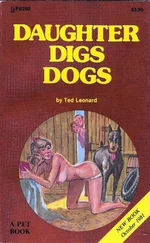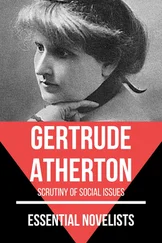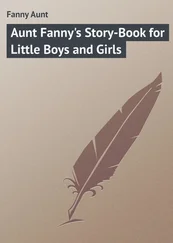“Scrag End has me baffled,” he said, handing us our drinks. “Miss Graham has advanced several theories to explain what’s going on here, but I find them less than convincing.”
Francesca and I exchanged puzzled glances. It was a queer remark, coming from a man who planned to finance a museum on the strength of his finds at Scrag End field.
“Is there something wrong with Scrag End?” I asked.
“Everything’s wrong,” Adrian replied. “We’re finding the wrong artifacts from the wrong periods in the wrong places.” He reached for the sketch pad, flipped to a blank page, and pulled a chair over, so he could sit between Francesca and me.
“Archaeological sites have their own logic,” he began, resting the oversized pad on his lap. “To put it simply, if you find a lot of broken pottery, it’s reasonable to assume that you’ve happened upon a potter’s shop. And if you find nothing but fifth-century pottery, it’s reasonable to assume that the potter lived in the fifth century. Furthermore . . .” He pulled a pencil from his shirt pocket and drew five horizontal lines on the sketch pad. “Layers of soil are like layers of time. As a general rule, the deeper you dig, the older the artifacts.”
As he bent once more over his sketch pad, my heart began to race. I’d read enough picture captions in National Geographic to follow Adrian’s argument. Archaeologists expected to find artifacts from different periods clustered in different layers of soil. A fifth-century spearhead lying beside a first-century statue of Minerva would set off all sorts of alarms. If Cornelius Gladwell had been stupid enough to dig a hole and simply dump his Roman gewgaws into it, then his hoax was doomed to failure. Not even an Oxford-trained archaeologist like Adrian could fake enough documentation to cover such a colossal blunder.
Adrian finished adding a series of dots to the horizontal lines. He pointed to the dots nearest the top of the page. “ These represent my initial discoveries. They range in date from the second to the fifth century. Do you see my problem?”
I tried to sound nonchalant. “Too many artifacts from too many centuries in the same place.”
“Exactly.” Adrian tossed the sketch pad onto the table. “And the trial trench isn’t clarifying the situation.”
I looked at him in confusion. He seemed to be admitting that his site was highly suspect, but he showed not the slightest sign of dismay or disappointment.
“Would you care to see the trial trench?” he offered.
“You go ahead, Lori,” said Francesca. “I’d sooner stay in the shade with the boys.”
The heat hit like a wet velvet curtain the moment Adrian and I left the shade of the tarpaulin. I glanced across the field at Rainey, hidden under her hat and helping Katrina shovel dirt from the wheelbarrow into what appeared to be a large wood-framed sieve. I was grateful to Adrian for providing her with sunscreen.
Adrian gazed skyward. “It’s beginning to cloud up. I believe we may be in for a good soaking before the weekend’s through.”
I looked up and saw a flock of fleecy clouds streaming across the sky, harbingers of heavier rain clouds to come. “The gardeners will rejoice.”
“ The farmers, as well,” said Adrian, with a glance at the stunted crops across the river, “but I’m afraid it won’t make my work any easier. Please, watch your step.” He took me by the elbow and guided me carefully through the maze of staked ropes to the edge of a yawning hole the size and shape of a grown man’s grave.
“Not a textbook trench,” Adrian observed, with a wry smile, “but nice work, nevertheless. Miss Graham is willing to work long hours, and her fitness fanaticism has paid off—she’s very strong—invaluable traits in a budding archaeologist.”
“Do you consider honesty an equally invaluable trait?” I asked.
“Naturally,” said Adrian.
“Then why did you lie to the vicar?” I demanded.
“I beg your pardon?” said Adrian.
I turned to face him squarely. “You told Mr. Bunting that you’d never heard of the Gladwell pamphlet, yet you’ve all but admitted that Scrag End is a hoax.”
“I never called Scrag End a hoax,” Adrian protested. “I merely pointed out a few anomalies, and Miss Graham has come up with some interesting explanations to account for—”
“Dr. Culver!” Rainey’s shout smote my eardrums like a clap of thunder. “Look what I found!”
20.
Rainey raced across the field and hurdled the staked ropes with the agility of a track star, then spoiled the effect by crashing into Adrian and nearly knocking him into his trial trench. As he caught his balance—and hers—Katrina dashed up, apologizing for the disruption. Adrian waved her to silence as Rainey held out a grubby fist.
“Look, Dr. Culver! Isn’t it grand?” Rainey gazed up at Adrian, transported.
Adrian bent low to examine the silver coin in Rainey’s filthy palm. “What luck!” he exclaimed. “It’s not many archaeologists who find a silver denarius on their first trip out.”
Rainey’s gaze dropped to the coin. “I thought it was money.”
“It is money,” Adrian assured her. “It’s a kind of money people used long ago.” He squatted beside her and pointed at the coin with his little finger. “See here? This is a picture of Constantine, a Roman emperor. After you’ve brought the denarius to the schoolhouse, Miss Graham will tell you all about the emperor Constantine.”
Rainey’s face fell. “I can’t keep it?”
“You don’t want to keep it for yourself,” Adrian told her.
“I don’t?” Rainey closed her fist over the coin.
Adrian shook his head. “When we find things here, they don’t belong to us. They belong to everyone. That’s why we put them in museums, where everyone can see them.”
Rainey gave the proposition some serious thought. “May I bring Mummy and Daddy and Jack and Gran to your museum to see my denarius?”
Adrian let your museum pass without comment. “Of course you may. Let’s go back to the work station. We’ll put Constantine’s denarius in a box, so you won’t mislay it. It’s a splendid discovery, Rainey. I’m very proud of you.”
I almost sympathized with the resentful look that flashed across Katrina’s sweaty face. She’d put a lot of hard work into the dig. It had to be galling for her to be upstaged by a scrawny eight-year-old.
“Katrina,” I said, “why don’t you take a break? You look as though you could use one.”
“I don’t need a break,” she said shortly, looking down at the trench.
“ That’s too bad,” I said. “I was hoping you’d explain your theories to me.”
She glanced up. “Did Dr. Culver mention my theories?”
“Yes,” I said, “and he gave you full credit for them.”
“He’s too generous,” she said, thawing slightly. “All I’ve done is recapitulate his lectures.”
“I’d love to hear your interpretation of his lectures,” I coaxed.
Katrina cast a sour glance toward the tarpaulin. “Are you sure I won’t interrupt—”
“Don’t be silly,” I said firmly, taking her by the arm. “Our visit wouldn’t be complete without a lecture from an expert.”
Katrina’s resistance crumbled. “I’m not an expert,” she said, allowing herself to be tugged along, “but I’ll be happy to explain my theories, if you’re really interested. . . .”
By the time we reached the tarpaulin, Adrian had deposited Rainey’s silver coin in a small cardboard box labeled RAINEY DAWSON’S DENARIUS. It seemed to me to be an oddly imprecise annotation—no date, no provenance—and when Katrina saw it, she looked sharply at Adrian. He responded with a sly wink, and Katrina relaxed, grinning sheepishly.
Читать дальше








